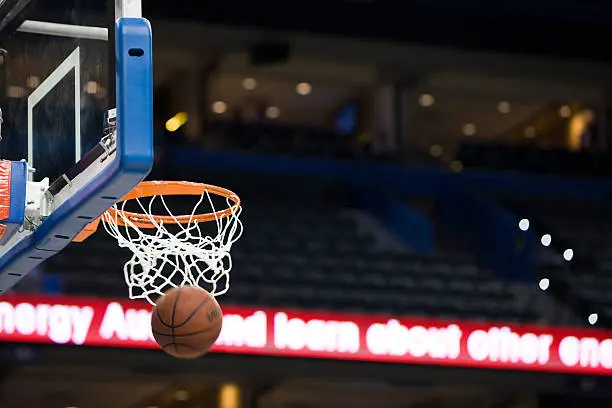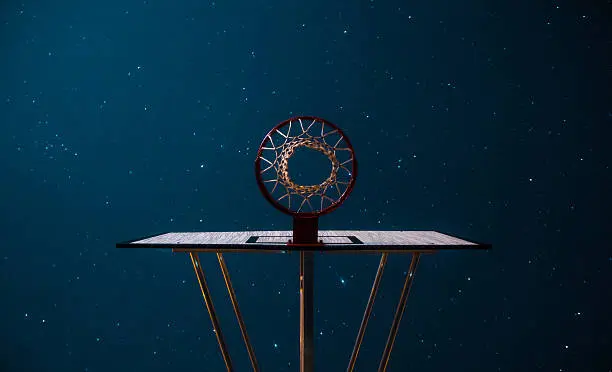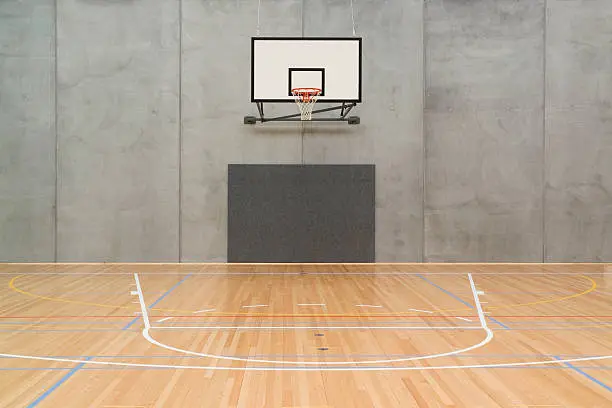What Is The Square on a Basketball Backboard?
In a game of basketball, there are a number of differing shot opportunities available to a player. From the jump shot, to the layup, to the hook shot. However, there is, perhaps, no higher probability shot than the bank shot. Taken utilizing the square above the basketball rim, the bank shot has one of the highest success rates from all available shot selections on the court.
But, just what is the square on a basketball backboard? And why don’t more NBA players take advantage of the square and the bank shot during the course of a game?
Below, we are going to look at the square on the basketball backboard, discuss its use-cases, benefits, and history. In addition, we will take a look at a study completed on the square on the basketball backboard to better determine whether utilizing the square for a bank shot can increase the chances of a successfully made field goal.

What Does a Basketball Hoop Consist of?
In a regulation or pick-up game of basketball, only a few pieces of equipment are really needed to get the game started. A standard, size 7 basketball for the men’s game and a basketball hoop, attached or affixed 10 feet above the ground.
The basketball hoop, though, has a few additional components which help the flow of the game. However, although these additional components are useful, not all of them are necessary. And although in a regulation game or an NBA one, you will see all components mentioned below, many non-regulation games are played without.
- Basketball backboard – the basketball backboard is the flat, rigid piece of the overall hoop structure. Typically containing a small rectangular outline on the front, the basketball backboard is typically made of a Plexiglas or tempered glass material to avoid shattering. And while the most common basketball backboards are designed in a rectangular shape, many non-regulation courts feature oval or fan-shaped designs. Similarly, regulation basketball backboards have a width of 72 inches and a height of 42 inches. Further, the inner rectangle measures at 24 inches wide and 18 inches in length.
- Basketball Rim or Hoop – similarly, attached or affixed to the basketball backboard is the basketball rim or hoop. Either term may be used to describe the circular extension in which a basketball player shoots into. In a regulation game, and in most non-regulation games, the basketball rim is 10 feet above the ground. Similarly, all basketball rims are 18 inches in diameter.
- Basketball Net – lastly, in a regulation game of basketball, the basketball rim or hoop will have a net suspended from the hoop. This net can consist of a nylon material, which is what is used in the NBA and most regulation games, or can utilize a metal chain, which is more commonly seen in pick-up and street ball games. Similarly, the basketball net hangs approximately 15-18 inches below the rim. While nice to have, there are some fields and basketball courts, particularly ones in an outdoor setting, that do not utilize a basketball net.

What Is The Purpose of The Square on The Basketball Backboard?
While a basketball backboard can come in a variety of differing shapes, including a rectangular one, an oval one, and a fan-shaped design, regardless of the backboard design, nearly all basketball backboards will contain a small square directly atop the basketball hoop.
And while commonly thought of as a square, the dimensions measure at 24 inches wide and 18 inches in length, making it a rectangle in shape.
However, while providing a nicer overall aesthetic, the rectangle above the basketball hoop is there for visual assistance to a shooting player. That is, the rectangular area directly above the basketball hoop provides players with a visual guide for calculating the trajectory of the ball off the board.
And while many times a shooter, particularly an adept one, will attempt to sink a field goal directly through the net, creating a “swish” sound, for many less-experienced and less accurate shooters, the rectangle above the basketball hoop can provide a visual to ensure a successfully made field goal.
That is, by aiming a shot directly at the rectangle above the basketball hoop, a player can more accurately aim their shot and increase the likelihood of a made field goal. And while shooting a shot at the rectangle does require some finesse, it is easier to aim against then attempting to shoot directly into the hoop.

What Is a Shot on The Rectangle Called?
In basketball, a shot which utilizes the rectangle above the basketball hoop to bounce off the backboard and neatly into the basket is called a bank shot. So called a bank shot due to the increased probability of the shot attempt being successful, a bank shot is one of the most efficient shots in the game.
However, utilizing the rectangle, and the bank shot, is not advised for all shot attempts. Admittedly, the bank shot is best used for mid-range jump shots and shots from a 45-degree angle. Similarly, the rectangle bounce into the basket is most widely used for layups and to ensure a successfully completed one.
Long range shots and shots from beyond the three-point line will rarely utilize the bank shot. From further out distances, it is recommended to attempt to shoot the basketball directly into the net and avoid hitting the backboard.

Is The Bank Shot a Higher Probability Shot?
Unfortunately, not too many studies have been done on the bank shot as compared to other shots on a basketball court. However, one study, done by researchers at North Carolina State University, simulated one million basketball shots with a computer.
The researchers found that the bank shot can be 20 percent more effective when shooting at many angles up to a distance of about 12 feet from the basket. Bank shots are also more effective from the “wing” areas between the three-point line and the free-throw lane. However, straight-on shots – those corresponding to the area around the free-throw line – from further than 12 feet are not as well suited for bank shots.
Further, the researchers found that the optimal points where the simulated made baskets were aimed make a “V” shape near the top center of the backboard’s square.
As Dr. Larry Silverberg, a professor of mechanical and aerospace engineering at NC State and the lead author of a paper describing the research would state, “Basketball players can’t take a slide rule out on the court, but our study suggests that a few intuitive assumptions about bank shots are true…They can be more effective than direct shots, especially from certain areas of the court – and we show which areas on the court and where the ball needs to hit the backboard.”
